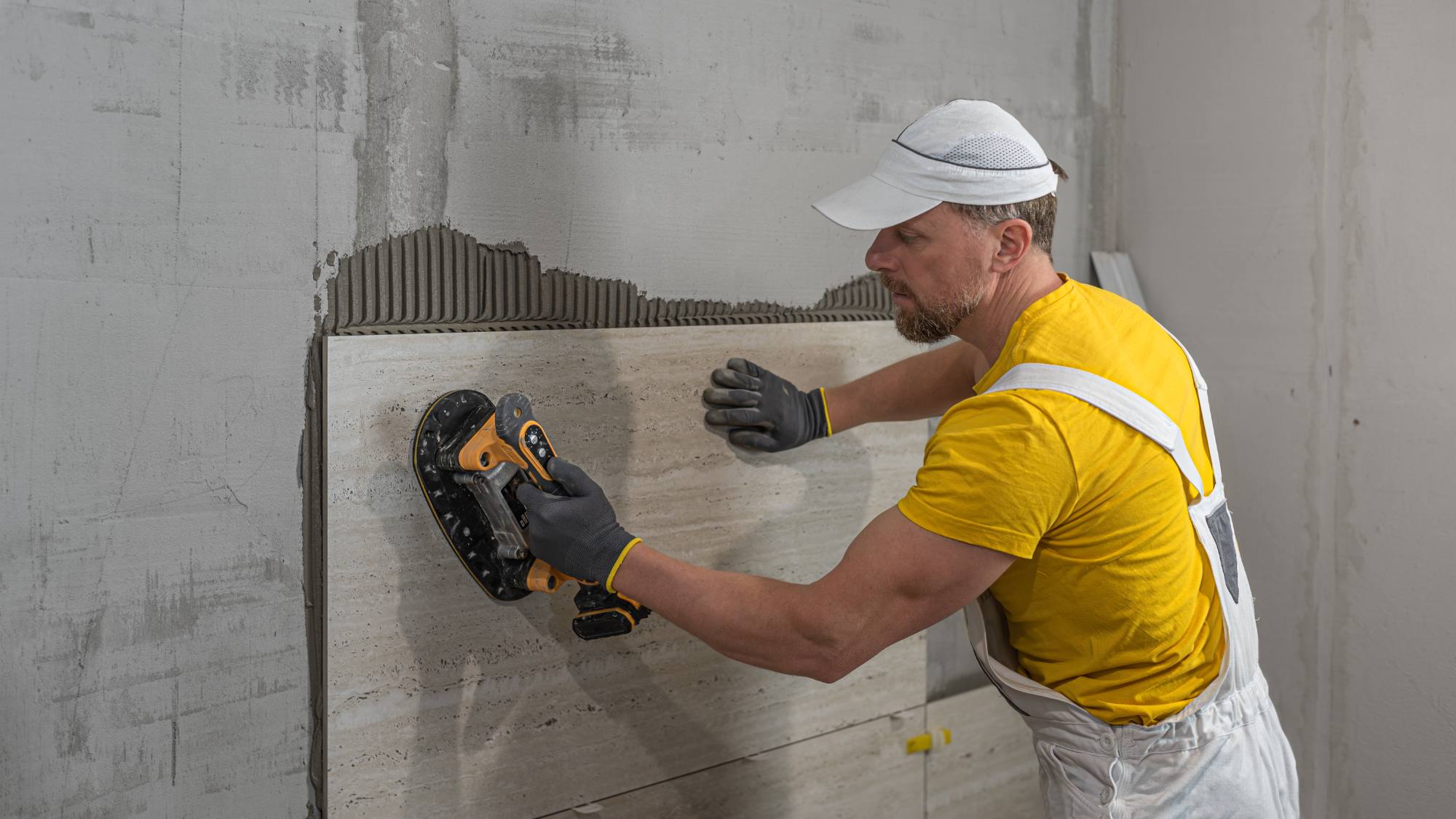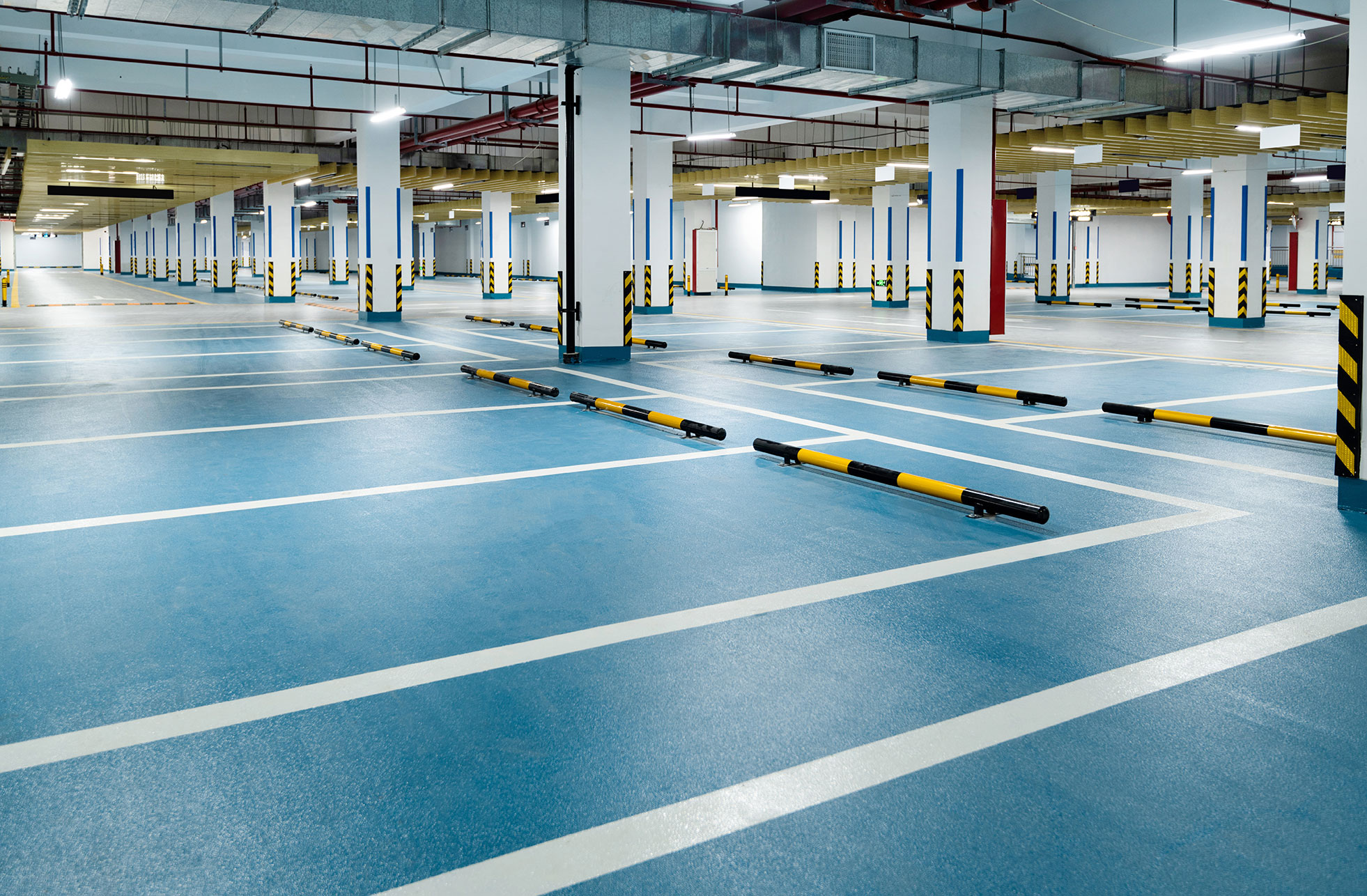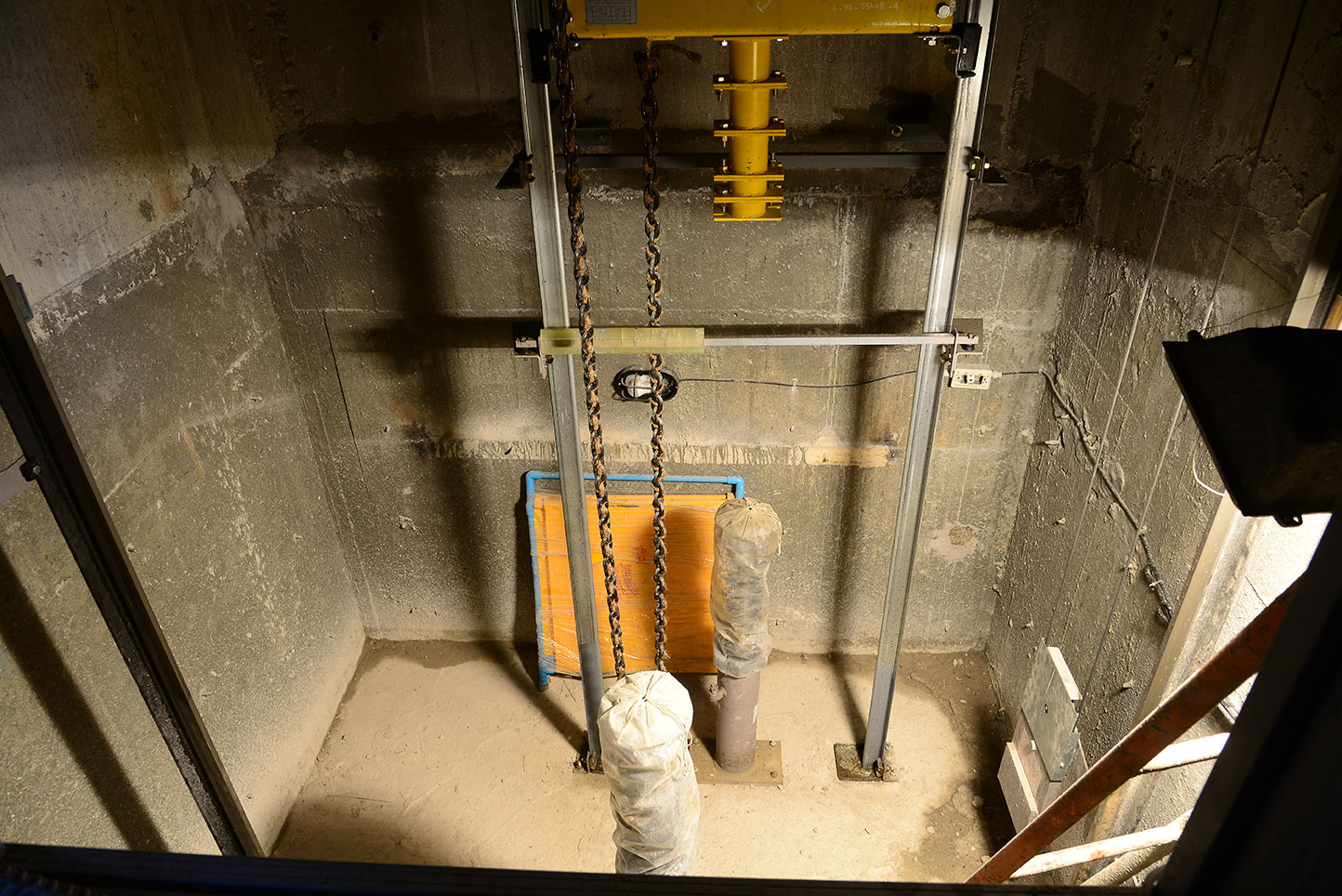
Why Tile Adhesive Strength Matters for Large Format & Heavy Tiles
ARDEX ENDURA
29 Oct 2025
05 Min
Laying the Foundation: Why Adhesive Strength Is Crucial
Tile adhesive isn’t just about fixing the tiles. It is the backbone of any good installation, holding everything together for years. Think of it as the unseen layer that decides whether your floor or wall stays perfect or starts failing.
With large-format and heavy tiles becoming the trend, this hidden adhesive layer carries a lot more stress. Furthermore, when adhesive strength falls short, the signs show up quickly:
- Tiles crack under weight.
- Corners lift or detach.
- Surfaces become uneven, creating lippage that ruins the look.
This is precisely why strength matters so much more with LFTs. You’re not only aiming for design but also for safety and durability.
Understanding the Challenges of Large Format & Heavy Tiles
While the exact specifications differ, a tile qualifies as “large format” once one side crosses 400 mm to 600 mm. Some go massive, with slabs measuring up to 5 × 10 feet. Beautiful, yes, but far less forgiving to install.
The challenges pile up quickly due to the following issues:
- Weight: Heavier tiles need stronger bonding to stay in place.
- Surface Tension: The larger the tile, the more stress spreads across its body.
- Air Voids: Even small gaps weaken adhesion.
- Slippage: On vertical walls, tiles can creep down before the adhesive sets.
- Uneven Adhesion: A single hollow pocket may cause cracks later.
This is why regular mortar is not enough. Large tiles require adhesives that are specifically engineered for their size, weight, and setting complexity.
Key Properties of High-Strength Tile Adhesives
Let’s unpack what enables a tile adhesive to handle large or heavy tiles. Here are the requisites:
- Shear Strength and Bond Strength: Shear strength resists horizontal forces. Whereas, bond strength keeps tiles firmly anchored. Both matter when shifting, sagging, or heavy use happens.
- Flexibility: Tiles and substrates contract or expand with moisture and temperature changes. However, a flexible, high-quality adhesive can absorb that movement without snapping.
- Open Time & Adjustability: With massive tiles, you need time to place, level, and tweak them. Adhesives with extended open time give installers that crucial breathing room.
- Slip Resistance: Especially on vertical walls, a strong grip prevents tiles from sliding down before they set.
Choosing the Right Tile Adhesive: Product Recommendations
Here are Ardex Endura’s standout adhesives. They are all crafted to meet LFT challenges head-on, in their own way:
- ArdiFlex S1 Grey: A high-performance, fibre-reinforced, and deformable adhesive. It offers enhanced slip resistance, along with flexibility and extended open time. It boosts bond and flexural strength, thus resisting cracks between tile and substrate.
- ArdiFlex S1 White: It functions much like its grey counterpart. This white adhesive brings the same fibre reinforcement, slip resistance, flexibility, and extra open time. Additionally, it accommodates bed thicknesses of up to 15 mm, proving quite handy for slightly uneven surfaces.
- PLATINUM STAR PLUS (Grey): It is high-performance and fibre-reinforced. Hence, it flexes, resists slips, and offers extended open time. This one is also designed to accommodate movement with a bed thickness of up to 15 mm. Even while remaining easy to mix and apply.
- PLATINUM STAR PLUS (White) : The white version mirrors all the grey’s perks. Right from fibre reinforcement to deformation capacity and long open time. Additionally, it can deal with up to 15 mm thickness and offers outstanding tensile and shear adhesion.
- Ardiflex PU 5: This multipurpose adhesive is great for fixing all types of tiles and stones on floors or walls, both indoors and outdoors. It is ideal for water-sensitive materials and works on many surfaces. Once cured, it is flexible, water-resistant and can handle heat and cold.
Surface Preparation & Substrate Considerations
It is essential to note that even the best adhesive can fail if the base is not properly prepared. Moreover, heavy tiles need a substrate that is flat, solid, and clean. Dust or unevenness actually reduces the contact and weakens the bond.
For porous or absorbent surfaces, priming is also critical. That’s because a primer regulates absorption. Hence, allowing the adhesive to perform consistently rather than drying out too fast.
Installation Tips for Better Adhesive Performance
A few small practices make a huge difference when you have large tiles on your hands:
- Back-butter Each Tile: This fills gaps and, resultantly, ensures full coverage.
- Pick the Right Trowel Size: Remember, deeper notches mean better spread for big tiles.
- Avoid Spot-Bonding: Patches under tiles leave hollow spots, so it is never a good idea.
- Maintain Joint Width: Adequate spacing reduces stress and prevents edge cracking.
- Use Suction Cups for Large-format Tiles: Suction cups or tile lifters can be used to safely lift and place large tiles. This not only prevents damage but also properly aligns the tiles during installation.
Conclusion: Strength Equals Safety & Style
In the world of large-format and heavy tile work, adhesive strength clearly can’t be overlooked. So, choosing a high-strength, fibre-reinforced adhesive is not optional; it is essential. These Ardex Endura adhesives will deliver a flawless mix of:
- Safety: By preventing slips and detachments.
- Durability: through movement and weight.
- Style: By keeping your layout smooth and visually flawless.
With the ArdiFlex S1 or Platinum Star Plus, you lock in that winning trifecta. Your installations stay strong, safe, and stunning; just as they should.




